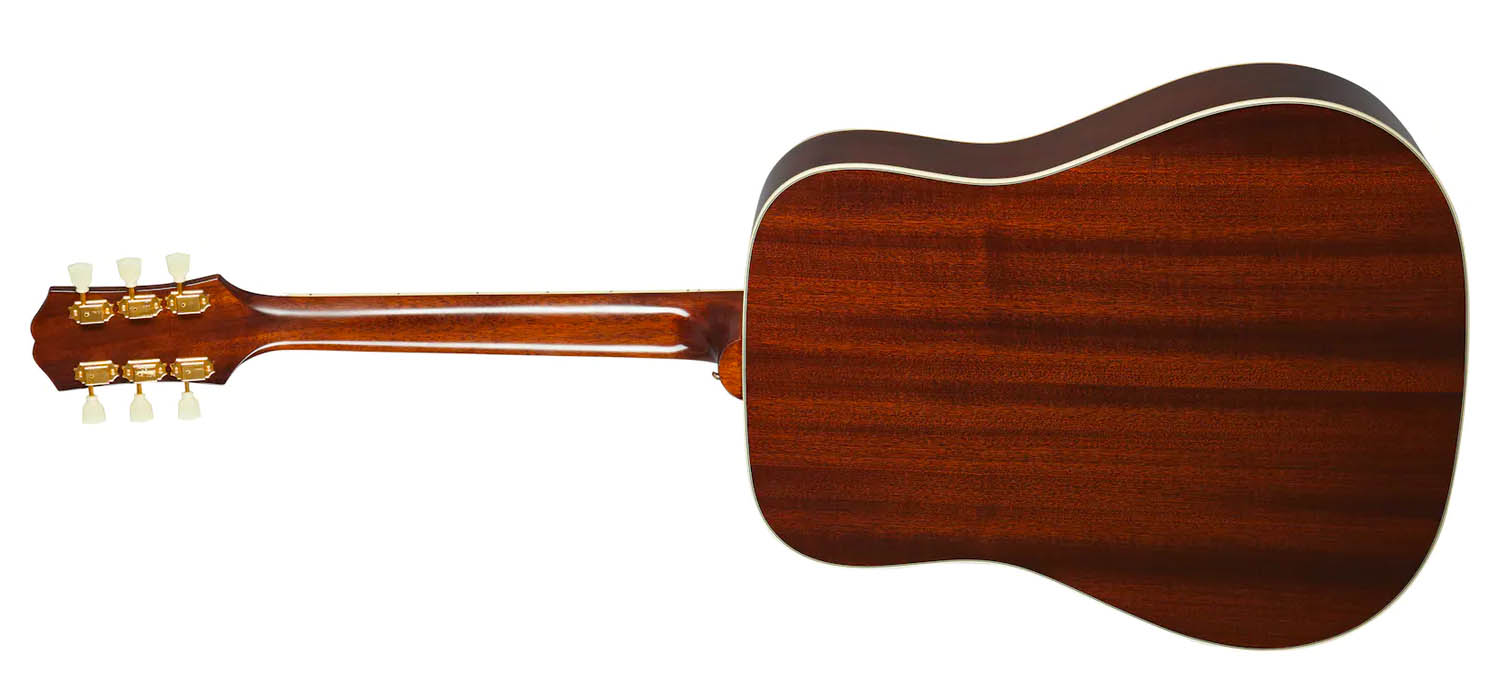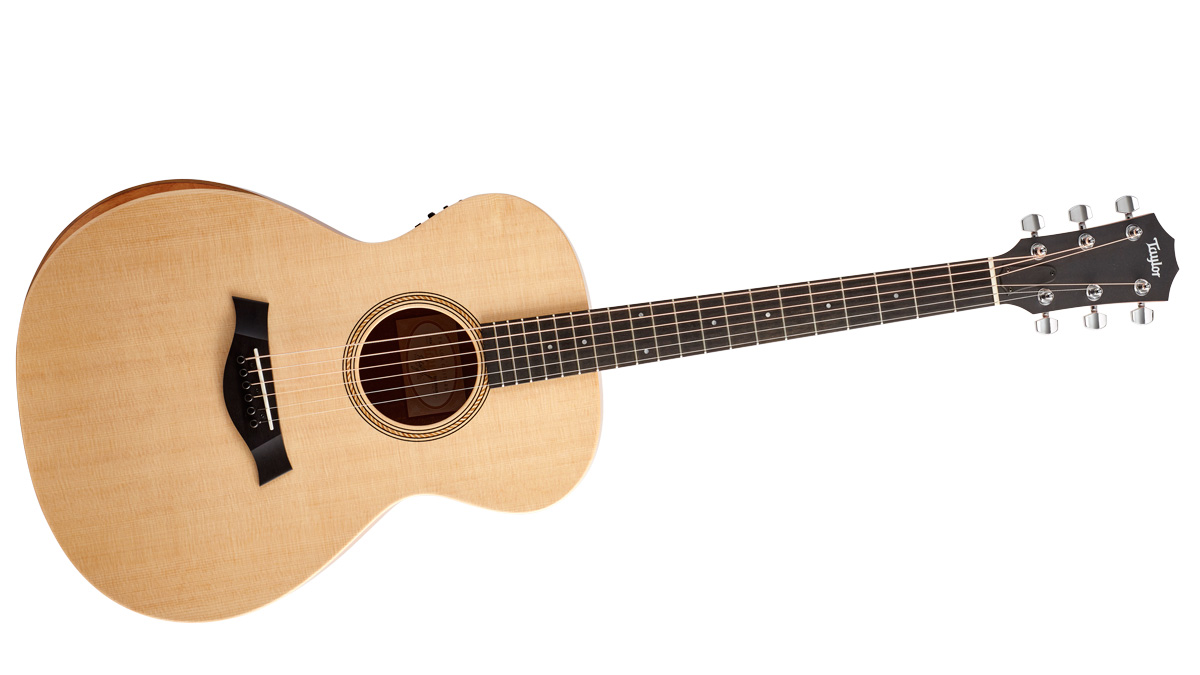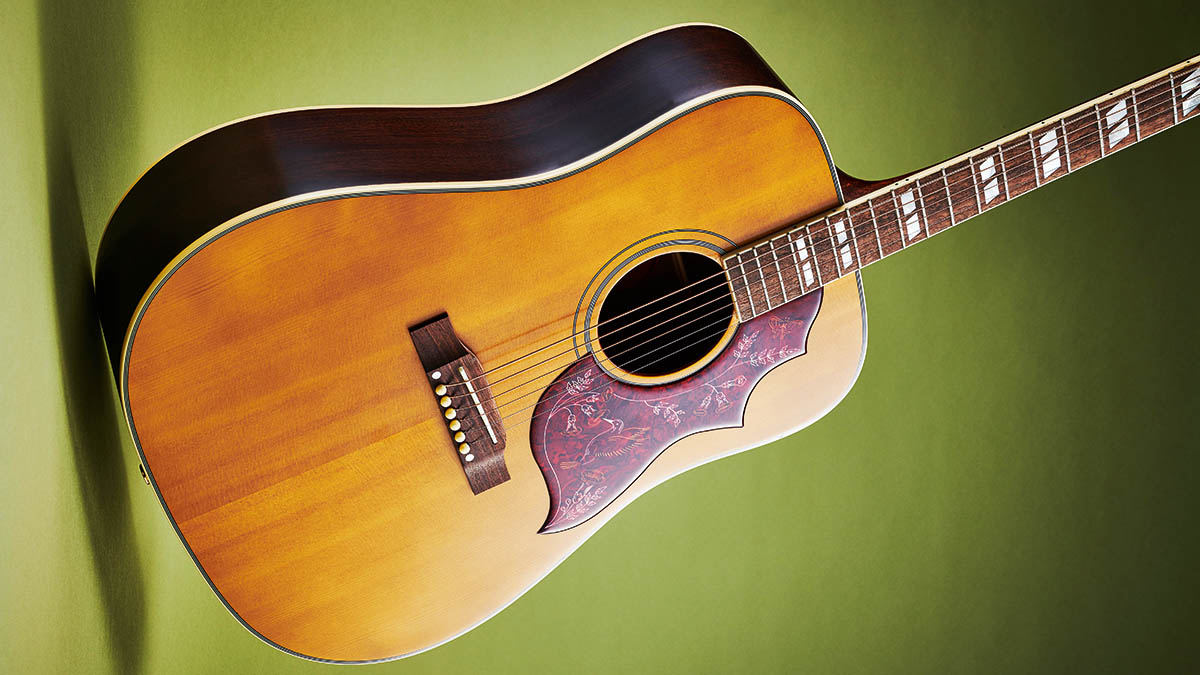MusicRadar Verdict
A convincing and grown-up Epiphone take on Gibson's most-famous acoustic, the Inspired By Gibson Hummingbird bears the sonic hallmarks of its illustrious US-built kin. All at a more attainable price.
Pros
- +
Classy looks.
- +
All solid-wood build.
- +
Great neck profile.
- +
Big 'bird tones.
Cons
- -
Fishman electronics are not that exciting.
- -
Factory setup could use a little love.
MusicRadar's got your back
What is it?
One of the most famous acoustic guitars of all time, the Gibson Hummingbird needs little introduction. If you can tell the greatness of an instrument by the company it keeps, the Hummingbird's status on the pantheon is assured.
Bob Dylan, Keith Richards, Sheryl Crow, Dave Grohl... The list goes on. The Hummingbird has long proven itself as a songwriter's guitar. It complements the human voice nicely, is magisterial with an open chord strum, and it records beautifully.
The thing is: it's expensive. A Gibson Original series Hummingbird is an aspirational instrument that costs north of three grand, so when Epiphone added it to its Inspired By Gibson series it was big news. This time it was attainable. The only question was how it was going to shape up against its high-end sibling.
Of course, Epiphone has offered the Hummingbird in the past. You can pick up a very reasonable Epiphone Hummingbird Studio for just under 300 bucks. It looks the part, with the split parallelogram inlays, square shoulders and decorative pickguard.
Epiphone's Inspired By Gibson series, however, is a little more ambitious, offering an all solid-wood build and an instrument that narrows the distance a little between a Gibson USA Hummingbird and one built-in China with Epiphone on the headstock. This is more than twice the price of the entry-level build, and in turn, is a little more grown-up.

The build follows a familiar tonewood recipe, partnering solid spruce on top with solid mahogany on the back and sides, and a mahogany neck. The finish is stunning. Epiphone easily clears the first hurdle – providing the wow factor when you open the case.
Available in Aged Cherry Sunburst Gloss and Aged Natural Antique Glass, as reviewed, this Hummingbird is a real looker. The aged lacquer brings out the depth in that dark mahogany. The MOP fretboard inlay adds plenty of visual pizazz, too. There is no mistaking this for a beginner's acoustic.
The scale length is an old-school 24.72", with the fingerboard offering a reassuringly feel courtesy of its Gibson-standard 12" radius. Here, however, Epiphone has used Indian Laurel. On the flagship Gibson models, you'll get rosewood, and on the Gibson Studio models, you'll get a choice of walnut or rosewood. Still, Indian laurel is not to be sniffed at, and on balance is preferable to the pau ferro of the cheaper Epiphone model.
The Indian laurel is reprised for the bridge, which has a bone saddle to match the nut. There is a set of sturdy and fit-for-purpose gold-plated Epiphone Deluxe tuners, and rounding out the spec – and making it ready for the stage – there is an under-saddle Fishman Sonicore piezo with Fishman Sonitone soundhole pickup system, with volume and tone controls.
Performance and verdict
While we are knocked out by the visuals and the attention to detail on the lacquer, the factory setup could use a little T and C. There is a little bit of a bow in the neck that needed a tweak on the truss rod before being pressed into service, and, once more, those Velcro pouches have proved themselves a poor choice for holding the electronics' 9V battery.
Yes, why not just house the battery near the endpin, tucked away all snug its own compartment? Why not, indeed. Anyway, these things are but trifles when you fret a chord and let it ring out. The neck profile is a crowd-pleaser, accommodating busy playing and chords alike.

• Taylor Academy Series 10E
The Academy Series represents a very clear vision, and in many ways, a dream beginner guitar, as well as a potential trade-up for some existing players – one that can inspire and go the distance with a guitarist from bedroom to stage.
• Sigma DM-SG5+
What’s surprising is how close to Hummingbird territory this DM-SG5+ gets. It may not have the breadth of dynamic response but it’s not as far away as some might imagine. And for those priced out of Gibson ownership (and have always lusted after a Hummingbird), that’s welcome news.
• Yamaha FG5
The original red label Yamahas have become sought after on the collector market and, if this reissue is anything to go by, it’s easy to see why. Pitched in the lower-mid price range, it would keep a beginner to semi-pro happy for years. All in all, it’s a good all-rounder.
The Hummingbird's dimensions – those big, broad square shoulders – help it project with a power that might catch you unawares. The tones are three-dimensional, rich, nuanced, and well balanced. Strummers will love the authority in the low end, and while the voice is deep, there's no shortage of detail in the upper registers, with a powerful presence on single-note passages complementing its big rhythm tones.
That detail will only appreciate in the years to come as the solid wood ages. This is where the Inspired By Gibson model really exerts an advantage over laminate builds. You can really beat those strings hard, too, without worrying about throwing the Hummingbird out of tune.
This all makes for a loud guitar. You might very well question why it needs the electronics at all. Mic'd up, this would record nicely. And many pro Hummingbird players will often fit an L.R. Baggs magnetic soundhole pickup as an aftermarket mod.
For the record, the Fishman Sonitone system does a reasonable job, its tone control acting as a treble roll-off. It's found everywhere these days – even on the Hummingbird and the likes of the SJ-200 Studio Rosewood and others in Gibson's Studio line. That asks the question of the player swithering between Gibson USA and top-line Epiphone – is the USA model really worth the extra outlay?
That'll depend on the player. The only question any guitar needs to answer, though, is whether it justifies its own price tag, and this big-lunged songbird sure does, and it'll only improve with age.
MusicRadar verdict: A convincing and grown-up Epiphone take on Gibson's most-famous acoustic, the Inspired By Gibson Hummingbird has all the sonic hallmarks of its illustrious US-built kin. All at a more attainable price.
Hands-on demos
Sweetwater
Peach Guitars
Andertons
Alamo Music Center
Specifications
- TYPE: Squareshouldered dreadnought-style electro acoustic
- TOP: Solid Sitka Spruce
- BACK AND SIDES: Solid mahogany
- SCALE LENGTH: 24.72” / 628mm
- NECK: Mahogany
- FINGERBOARD: Indian laurel
- HARDWARE: Epiphone Deluxe tuners with press in gold bushings, bone saddle and nut.
- ELECTRONICS: Undersaddle Fishman Sonicore piezo with Fishman Sonitone soundhole (volume and tone controls)
- FINISH: Aged Antique Natural Gloss (as reviewed), Aged Cherry Sunburst Gloss
- CONTACT: Epiphone
MusicRadar is the number one website for music-makers of all kinds, be they guitarists, drummers, keyboard players, DJs or producers...
- GEAR: We help musicians find the best gear with top-ranking gear round-ups and high-quality, authoritative reviews by a wide team of highly experienced experts.
- TIPS: We also provide tuition, from bite-sized tips to advanced work-outs and guidance from recognised musicians and stars.
- STARS: We talk to musicians and stars about their creative processes, and the nuts and bolts of their gear and technique. We give fans an insight into the craft of music-making that no other music website can.
“Every one of them said yes without hesitation": Hank Marvin and Roger Taylor have just remade a '60s classic for charity
Do you know where your money goes when you buy a gig ticket? A new report breaks it down
“Every note counts and fits perfectly”: Kirk Hammett names his best Metallica solo – and no, it’s not One or Master Of Puppets











